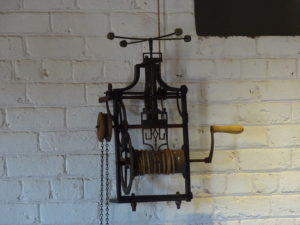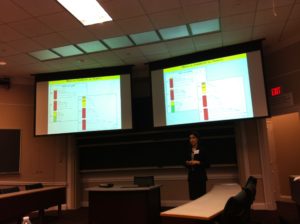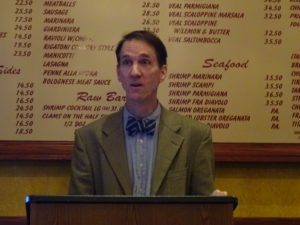It’s been a busy five days of science traveling – Lincoln, Jefferson, CPRC, More Lincoln.
Thursday night started off with the Bull Run Civil War Round Table, with John Quarstein speaking about the Battle of Mobile Bay. Featuring two great Admirals – Franklin Buchanan for the South and David Farragut for the North – and a bunch of ironclad ships. Buchanan had captained the CSS Virginia (formerly the USS Merrimack) during its impromptu attack on the Union fleet during its shakedown cruise. Chased away by the USS Monitor, a pillbox type ironclad, the Virginia was later scuttled and Buchanan made his way to Mobile Bay where Farragut defeated him after making a bold (some would say fanatical) run through the Confederate torpedo field, which spawned the famous (slightly incomplete) order to “Damn the Torpedoes, Full Speed Ahead!”

Saturday put me at Monticello, Thomas Jefferson’s plantation home in Charlottesville, Virginia. Jefferson was as close as they come to a science geek of the time, designing the house and many of the mechanical devices on the property. Twice a day for forty years he would record the temperature and wind direction, keeping meticulous notes about his activities related to archeology, paleontology, and other sciences. His famous anteroom clock is powered by cables hung with small cannonballs as counterweights. He had to “rewind” the clock every seven days and, noticing this allowed him to use the clock also as a calendar, had labels attached to the wall designating the days of the week. Unfortunately, it was a seven day clock and he had only five day walls, so a hole was cut in the floor for the weights and days Saturday and Sunday continue into the basement.

After a morning on the University of Virginia campus (built by Jefferson as a school for science), Sunday afternoon began the annual meeting of the Chesapeake and Potomac Regional Chapter (CPRC) of the Society of Environmental Toxicology and Chemistry, an international organization that I’ve been a member of for a long time and recently won a big award. I have sponsored CPRC for the last four years and find their meetings incredibly informative. Sunday afternoon was a short course by climate policy expert Dr. Paul Wagner of Virginia Tech. Monday was a full day of platform presentations and posters documenting recent research by CPRC members.

Tuesday was back in Washington, DC at the monthly meeting of the Lincoln Group of DC. This month we had Dr. James Cornelius, curator of the Lincoln Collection at the Abraham Lincoln Presidential Library and Museum in Springfield, Illinois. Cornelius fascinated us with newly found letters and other artifacts related to Lincoln, including some surprising forgeries along with genuine finds. He even mentioned a recent find in which Lincoln had written the name of the person he borrowed a book from so he could return it. This is important because the book was called “Types of Mankind,” which was used by many to promote a “scientific” basis for the differences between the races and a rationalization for racism and slavery. The methods used and arguments put forth are not particularly scientific, but it was a highly influential book at the time. Meanwhile, Darwin (who was born on the same day as Lincoln) published his “Origin of Species” in 1859, just as Lincoln was preparing his run for the presidency.
I’ll see Dr. Cornelius again within a week because I’m flying out to Springfield to spend a few days working with the Papers of Abraham Lincoln Project as research my new book.
So it’s been a busy week for Presidents and Science. And there will be much, much more so stay tuned.
David J. Kent has been a scientist for thirty-five years, is an avid science traveler, and an independent Abraham Lincoln historian. He is the author of Tesla: The Wizard of Electricity (now in its 5th printing) and two e-books: Nikola Tesla: Renewable Energy Ahead of Its Time and Abraham Lincoln and Nikola Tesla: Connected by Fate. His book on Thomas Edison is due in Barnes and Noble stores in spring 2016.
Follow me by subscribing by email on the home page. And feel free to “Like” my Facebook author’s page and connect on LinkedIn. Share with your friends using the buttons below.











Pingback: The Year in Science Traveling – 2016 | Science Traveler
Pingback: Science in Charlottesville | Science Traveler